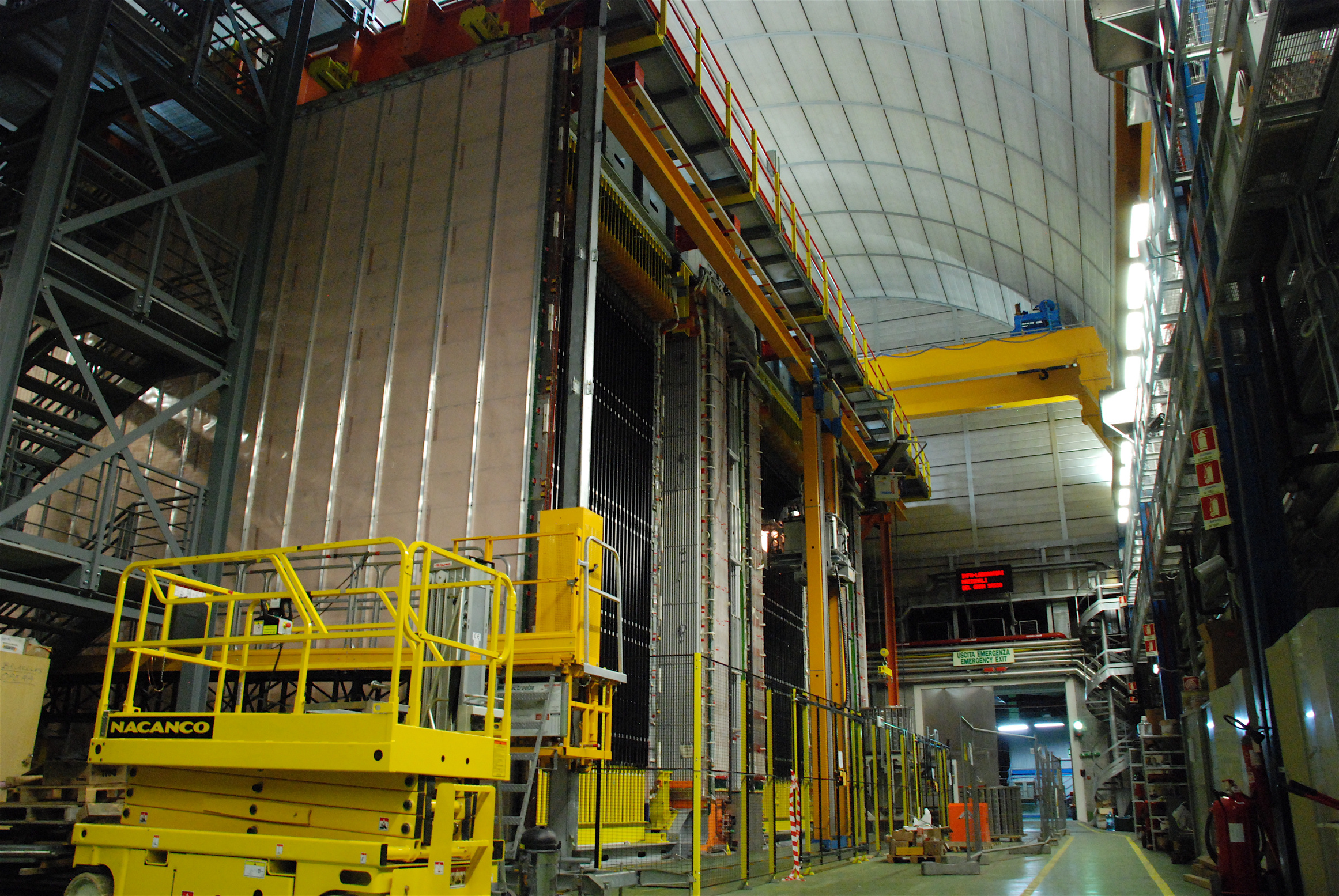
Computer reconstruction of the tau neutrino event shows details of the millimeter-wide region around the point of interaction of the invisible tau neutrino, coming from the left. The signature of the interaction is the long blue track, a tau lepton produced in the interaction. (Click on image for best resolution.)
On Monday, May 31, the OPERA Collaboration based at the Gran Sasso underground laboratory in Italy announced a rare breakthrough in particle physics: the first direct observation of a muon neutrino turning into a tau neutrino. The observation confirms that indeed neutrinos do oscillate among “flavors.”
Since the mid-1960s neutrino oscillation has provided the best explanation for the so-called missing solar neutrino problem. Physicist Ray Davis, working deep in the Homestake Mine in South Dakota, found just a third of the neutrinos that theorists predicted should be created in the sun. His experiment was sensitive to electron neutrinos, the only kind the sun makes; the idea was that the other two-thirds had transformed themselves into muon and tau neutrinos on their way to Earth.
Experiments like SNO, Canada’s Sudbury Neutrino Observatory that recorded all three flavors of neutrinos arriving from the sun, and Japan’s KamLAND, the Kamioka Liquid scintillator Anti-Neutrino Detector that records neutrinos produced by nuclear reactors, have long studied oscillation indirectly, by measuring the ratio of the neutrinos they do see to the ones they don’t.
“Many oscillation experiments report neutrino disappearance,” remarks Kevin Lesko of Berkeley Lab’s Nuclear Science Division, “but an appearance experiment like OPERA’s, where you see one species disappear and reappear as a different species, really nails the neutrino oscillation phenomenon, as opposed to an explanation based on some exotic decay of neutrinos.” Lesko is the principal investigator at the planning office for DUSEL, the Deep Underground Science and Engineering Laboratory proposed for the same Homestake Mine that housed Davis’s seminal experiment.

The OPERA detector is housed in a tunnel in the Gran Sasso laboratory. OPERA’s core consists of 150,000 photoemulsion plates sandwiched between lead plates.
OPERA, which stands for Oscillation Project with Emulsion-tRacking Apparatus, depends on a different kind of neutrino source, a beam of muon neutrinos produced by the Super Proton Synchrotron at CERN, 730 kilometers (450 miles) away. The neutrinos cover the distance between CERN and Gran Sasso in just 2.4 milliseconds, traveling underground the whole way before whispering through OPERA’s 13 million lead plates, which have photographic plates sandwiched between them. CERN’s muon neutrino beam fired up three years ago; it took OPERA that long to catch one tau neutrino among the trillions upon trillions of muon neutrinos that passed through the detectors – no surprise, since neutrinos rarely interact with anything, and the tau leptons that signal such interactions in OPERA’s detectors are so shortlived they travel only about 100 millionths of a meter before they vanish.
The OPERA Collaboration is comprised of over 160 researchers from 33 institutions in 12 countries. The Gran Sasso Laboratory is managed by Italy’s National Institute for Nuclear Physics (INFN); CERN is the European Organization for Nuclear Research.
Additional information
The CERN news release on the observation of the tau neutrino
The INFN news release on the observation of the tau neutrino
More about OPERA